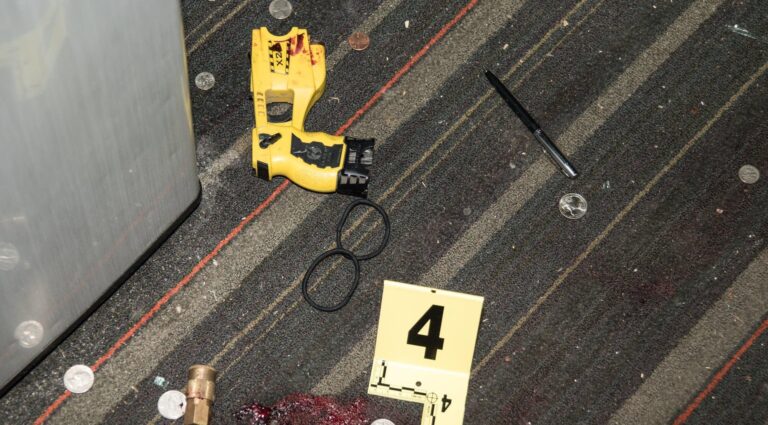Table of Contents
- Common Reasons Your Stun Gun Might Fail When You Need It Most
- Step-by-Step Troubleshooting to Revive a Non-Responsive Stun Gun
- Maintenance Tips to Extend Your Stun Gun’s Lifespan and Reliability
- When to Seek Professional Repair or Consider Replacing Your Stun Gun
- To Wrap It Up
Common Reasons Your Stun Gun Might Fail When You Need It Most
One of the most common culprits is a drained or improperly charged battery. Stun guns rely heavily on battery power to deliver a strong, effective shock. If the battery is old, not fully charged, or has never been charged properly, the device may fail to deploy the necessary voltage at a critical moment. It’s important to regularly check the battery level and recharge it according to the manufacturer’s instructions. Another frequent issue is lack of maintenance. Dust, moisture, or corrosion can build up on the contact points or internal circuitry, disrupting the electrical flow and causing malfunctions.
Additionally, improper handling or accidental damage can compromise the stun gun’s functionality. Dropping the device, exposing it to extreme temperatures, or using it incorrectly-such as holding the electrodes too far from the target-can lead to failure. Make sure the stun gun is tested frequently on a low power setting (if available) and kept in a dry, safe place.
- Regularly inspect: Check for cracks, corrosion, or dirt on electrodes.
- Proper storage: Keep the device away from moisture and direct sunlight.
- Familiarity: Practice safe handling to avoid accidental damage.
Step-by-Step Troubleshooting to Revive a Non-Responsive Stun Gun
Begin by ensuring the stun gun’s battery is sufficiently charged. Many non-responsive units simply need a full recharge to spring back to life. Plug the device into its charger and leave it uninterrupted for the recommended charging duration, typically 4-6 hours. While charging, inspect the charging port and cable for any visible damage or debris-sometimes poor connectivity is the culprit. Do not attempt to use the device while charging, as this could cause further issues or damage.
Next, perform a basic functionality check. Test the stun gun’s switch mechanism by toggling it a few times to clear any possible internal switch hang-ups. Then, check the spark gap by holding the stun gun near a dark surface and carefully activating it-look for any visible sparks or hear the crackling sound that indicates it’s working. If nothing happens, try cleaning the contacts gently with a dry cloth or cotton swab. If sparks still fail to appear, consider removing and reinserting the battery if your model allows it, or consult the product manual for any reset features. Never attempt to open the stun gun’s internal casing unless you are qualified, as this can void warranties and pose safety risks.
- Check battery charge and charger condition
- Inspect charging port and cable
- Test switch functionality
- Observe spark gap carefully
- Clean electrode contacts gently
- Refer to manual for reset or battery access
Maintenance Tips to Extend Your Stun Gun’s Lifespan and Reliability
Ensuring your stun gun remains functional and dependable requires regular upkeep. First, always keep the device clean by gently wiping it with a soft, dry cloth to remove dust and grime that may accumulate on the electrodes and casing. Avoid using harsh chemicals or water, as moisture can damage the internal components. Additionally, make sure to store your stun gun in a cool, dry place away from direct sunlight and extreme temperatures, which can degrade its battery life and circuitry over time.
Battery maintenance plays a critical role in maximizing performance. Regularly check the battery status and recharge it according to the manufacturer’s recommendations to prevent complete depletion that might shorten battery longevity. If your stun gun uses replaceable batteries, opt for high-quality, compatible replacements and test their charge levels before installation. Incorporate these simple yet effective practices into your routine:
- Test the stun gun periodically in a safe environment to ensure it’s working properly
- Inspect for any physical damage or loose parts that could impair functionality
- Keep the safety switch engaged when not in use to avoid accidental discharge and preserve battery
When to Seek Professional Repair or Consider Replacing Your Stun Gun
Knowing when to step away from DIY fixes and entrust your stun gun to a professional can save you time, money, and potential hazards. If your device shows signs of persistent malfunction-such as inconsistent sparks, failure to hold a charge after repeated battery replacements, or any damage to critical components like the electrodes or casing-it’s wise to seek expert evaluation. Professionals have the tools and know-how to troubleshoot intricate electrical issues that aren’t easily spotted by visual inspection alone.
Additionally, consider replacement over repair if you notice any of the following:
- The stun gun is older than 3-5 years and has undergone multiple repairs.
- Repairs are becoming costly compared to the price of a new model.
- Signs of physical damage compromise safety, such as cracked housing or exposed wiring.
- The device no longer meets current safety or performance standards.
Making an informed choice ensures you maintain effective personal protection without compromising safety or reliability.
To Wrap It Up
If your stun gun stops working, don’t panic. By following the troubleshooting steps outlined above-checking the battery, ensuring proper maintenance, and verifying safety features-you can often get it up and running again quickly. Remember, regular care and timely replacement of parts are key to keeping your device reliable when you need it most. If all else fails, consulting the manufacturer or considering a professional repair service can save you time and hassle. Stay safe and stay prepared!Check Our Other Blogs
- StunGun – Your Trusted Source for Stun Guns, Laws, and Self-Defense Tips
- PepperSprayLaws – Your Trusted Resource for Pepper Spray Information
- StunGunLaws – Your Trusted Guide to Stun Gun Legality and Safety



